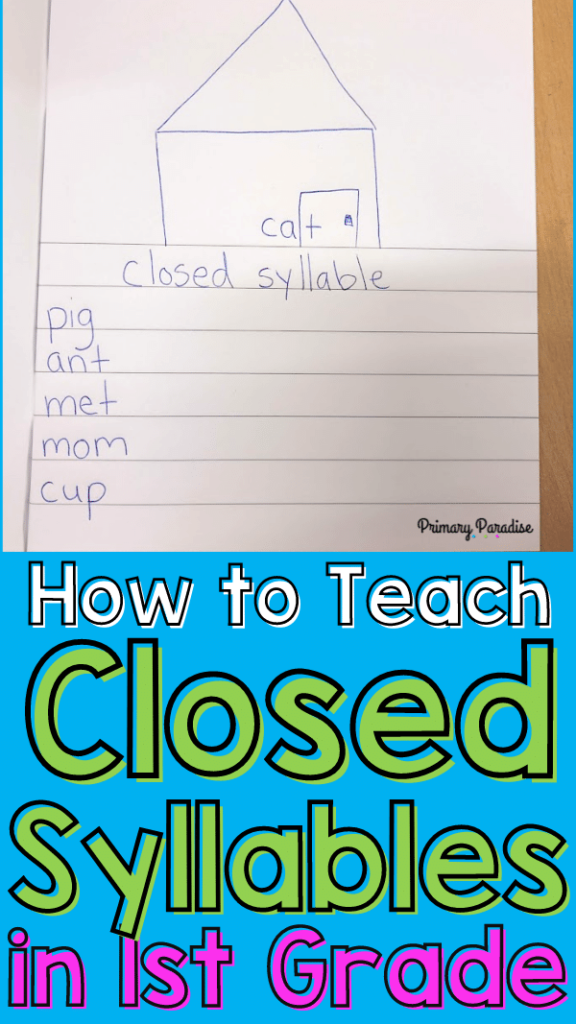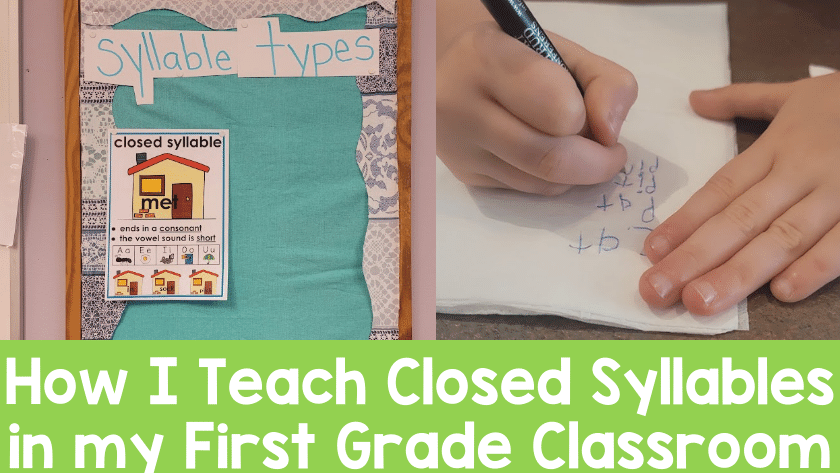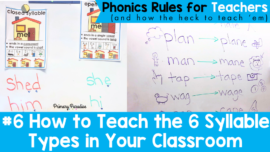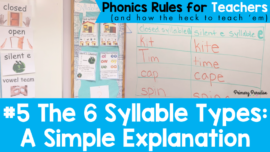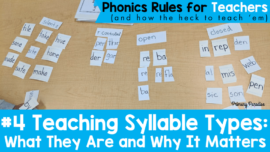Understanding syllable types makes reading and writing so much easier. Closed syllables are typically the first type of syllables children learn because it is the most common type of syllable. Here is how I introduce closed syllables in my first grade classroom.
What Do Students Need to Know Before You Introduce Closed Syllables?
If you’d like a complete breakdown of syllable types, you can find that in this post here.
Consonants and Vowels
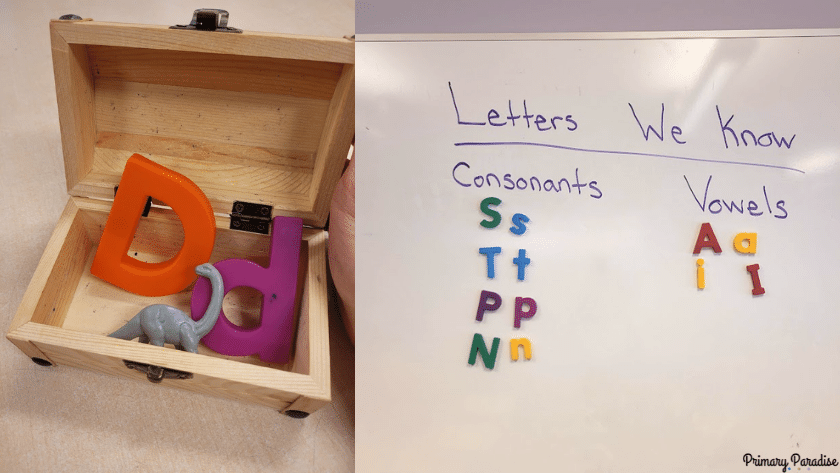
Before I think about syllables, I make sure my students have a solid understanding of consonant and vowel sounds. I spend the first few weeks of school reviewing letter names, letter sounds, and letter formation. Each day I have a treasure chest with a small object beginning with the two letters of the day. I pick a student each day to open it, say the object, and then we begin to review that letter.
During this time, we learn about consonants and vowels. We sort each new letter we learn into the two categories. Students learn that the vowel sounds we are learning are short vowel sounds. This is incredibly important because knowing short vowels is important for understanding and identifying closed syllables.

How to blend CVC words
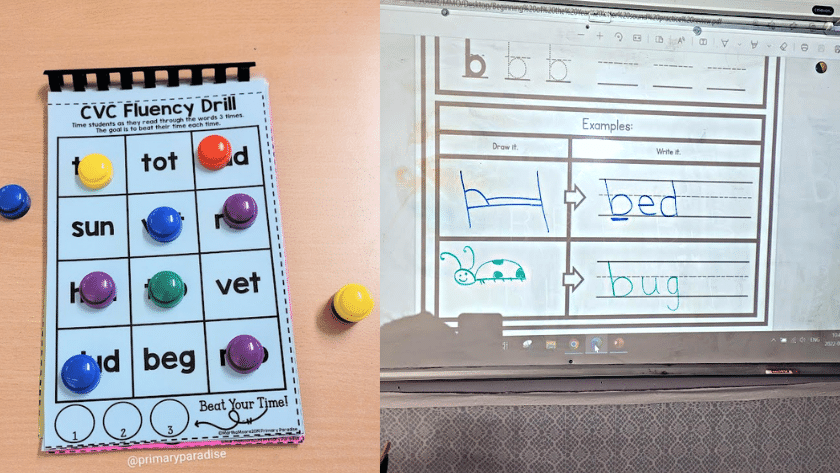
We also spend this time building and reading CVC words using the sounds we’ve already practiced together. Since CVC words are closed syllables this helps prepare them for identifying closed syllables. It also makes them seem lesson confusing and intimidating when they realize that they already have experience with closed syllables.
How to Hear Syllables
Last, we spend some time just practicing hearing and counting the syllables in a word. It can be tricky at first to explain the difference between the number of phonemes (or sounds) in a word, the number of syllables and the number of letters. For example, the work pinch has 5 letters- p-i-n-c-h, 4 phonemes- p-i-n-ch, and 1 syllable. I really like this video from Scratch Garden to help introduce my students to hearing the syllables in a word.
This video is great because it accurately explains syllables in a funny way. I also love the visuals.

After watching this video, I teach them my syllable chant (you can find it in this post). We practice saying different words with clapping, tapping, and feeling chin drops to see how many syllables a word has. Using student names or student suggested words makes this a lot of fun. Over the next few days, as we’re waiting outside of a special class, we’ll play a game where I say a word and they hold up how many syllables on their fingers.
We also talk about how every syllable has a vowel sound. It’s important to distinguish that it’s not that every syllable has one vowel, but one vowel sound. Otherwise when they learn other syllable types that have multiple vowels making one sound, it can be confusing.
Once they are comfortable with all of these concepts, you can begin working on closed syllables.
How to Teach Closed Syllables
Once they have a good understanding of how syllables feel and how to hear them and count them in words, I introduce the term closed syllables. I am a big fan of hand motions, so I use a hand motion for closed syllables. We put our hands on the sides of our head and then swing them to the front so they’re blocking our face while saying “closed” syllables.

I then write many closed syllables on the board or build them with magnet letters. We typically do one 2 letter word (such as it or am), a few CVC words, and a few 4 or 5 letter single closed syllable words. I ask them what they notice and, after some discussion, usually realize that a closed syllable ends in a consonant. We point out the vowel in each word and then we talk about how a closed syllable has a single vowel which makes a short vowel sound *most* of the time.
I share a poster visual of a house with a closed door, like this. It really helps to both solidify the meaning of the word “closed” and helps later on when we learn open syllables.
Next, I have my students work on a journal like this. The draw a house with a closed door and write a closed syllable word. Underneath we work together to come up with examples of closed syllable words. It’s really helpful and important for students to give the examples.
My favorite thing about teaching closed syllables is when I tell my students that about 50% or half of all syllables in the English language are closed syllables. This makes them excited because closed syllables feel “easy” and they means they can read SO many words!

We continue to reference back over the next few days and weeks until we learn another syllable type. I also love to show them words like rabbit and how even longer words like this can be decoded easily if they understand closed syllable words after the initial lesson. It makes them feel so confident to realize that this one small understanding opens up so much reading potential!
After teaching closed syllables, we spend time working with closed syllable words. I like to focus on only closed syllable words for about one to two weeks- building them, writing them, manipulating them. Once I feel confident that my students have a solid understanding, we move on to open syllables.
For a a complete breakdown of all 6 syllable types, you can find that in this post here.
